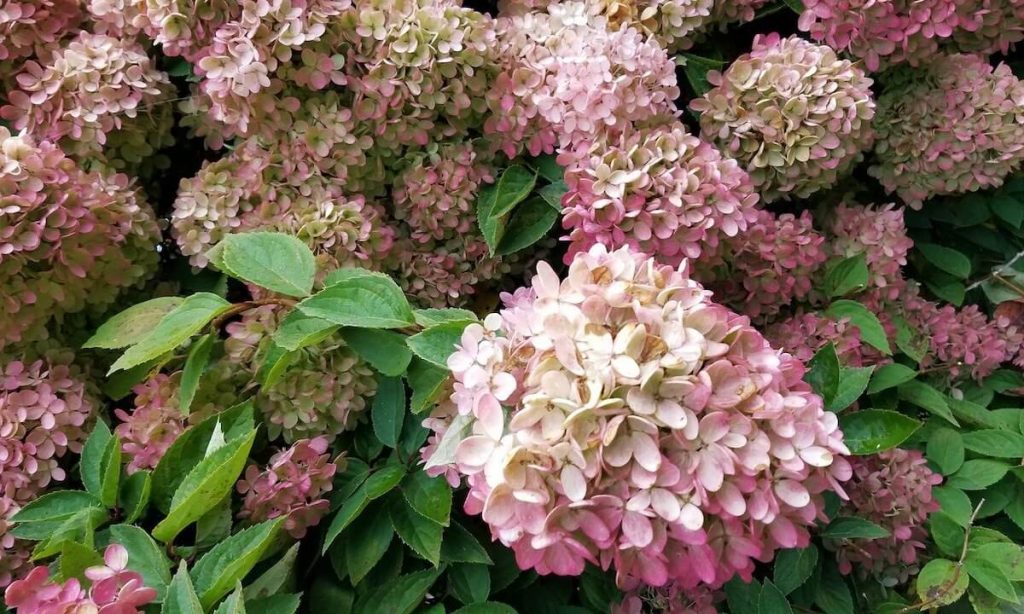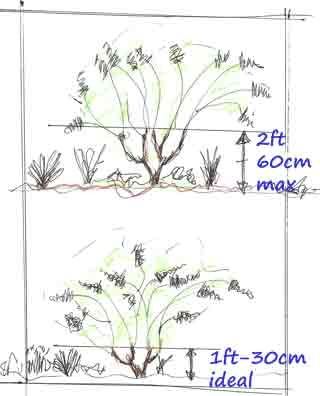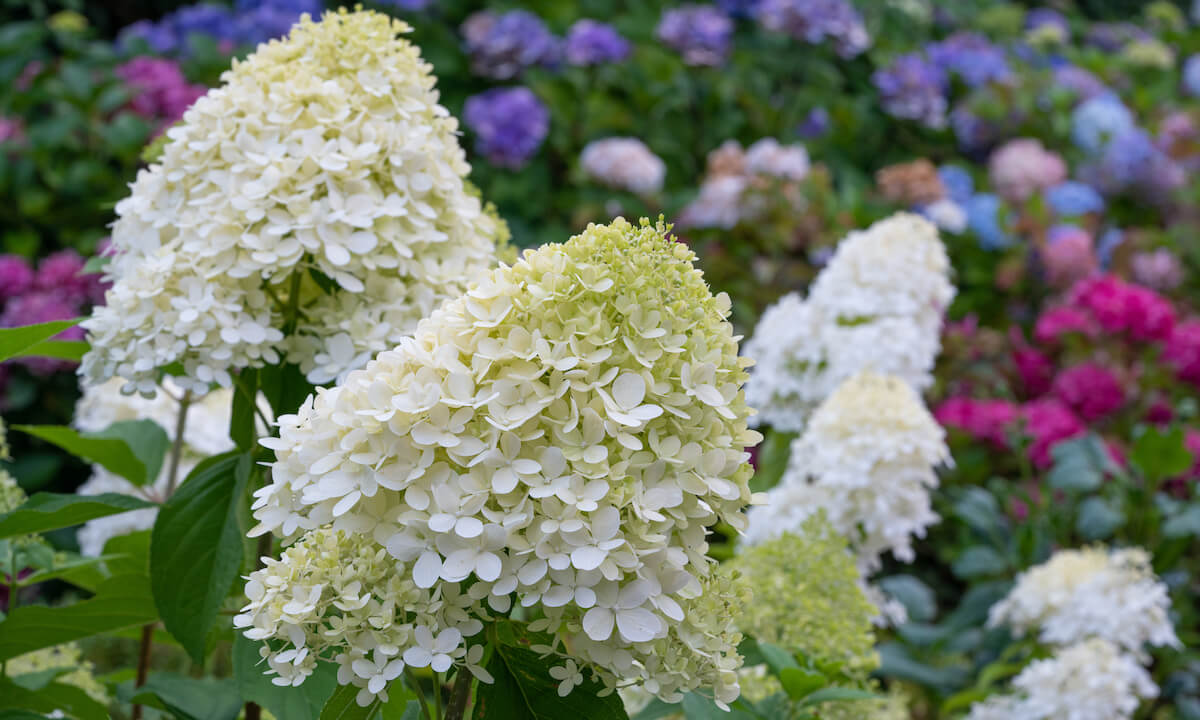The group of Hydrangeas – the H. Paniculata and H. Arborescens types – differ from the normal mop head varieties, which flower on growth made in the previous growing season.
Both Hydrangea paniculata and H. Arborescens flower on shoots made in the current season of growth, so need to be pruned differently in early spring to ensure a good crop of new stems which will then bear the large flowers on the end of the arching stems.
Pruning should be carried out in February or March. Prune the old stems back either to near ground level, or to a main trunk which has been allowed to grow to give the shrub extra height.
Pruning in this way is essential to ensure a healthy-looking plant with masses of large blooms on the end of arching stems.
Without this annual pruning, the shrub will turn into a sprawling tangled mass, with flowers getting smaller each year!
How & When to Prune Hydrangea Arborescens & Paniculata Grandiflora

With newer plants, you can decide on exactly how you want your Hydrangea to grow.
It can either be an arching cascade starting from near to ground level – 12in (30cm) is about right, or you can train with a framework that starts its new annual growth at a higher level – 2ft (60cm) is the maximum.
Trying to grow it as a small weeping tree, is fraught with difficulties.
Its top growth is considerable, and the basic root system will not support it if allowed to develop as a small tree.
Wherever you decide, the pruning regime is the same – and quite simple. It is also convenient, for it can take place at a time when there are fewer other things to demand your gardening time!
When to Prune Hydrangea Paniculata
Late winter – around a month prior to your normal spring starting – is ideal.
The Hydrangea will be dormant, though a few buds might be putting in an appearance.
It can be pruned later – as an emergency if required – but this will defer the flowering time and result in smaller flowers generally, for the new shoots will not have had time to replenish the plant with nutrients. Later is still better than not at all!
Where and How to Prune
 You will need strong secateurs or a sharp lopper. Blunt implements will invariably result in crushed stems, allowing dieback and fungal disease.
You will need strong secateurs or a sharp lopper. Blunt implements will invariably result in crushed stems, allowing dieback and fungal disease.
Whichever method of growth you want – low or high bush frame – the procedure is the same. Simply cut out all of the previous year’s flowering stems back to a point near the old framework, or down to where you want your new framework to start from.
The cuts should be around 4-5in (10-12cm) from the base of the old stems/branches you are cutting out. The end result will be a ‘stump’ of stubs from which the new shoots will emerge. These new shoots will rapidly grow into long canes which will arch over under the weight of the flowers later in the year.
By mid-summer your Hydrangea will be full of young flower buds and bright foliage – ready to stun you with a great display of large flowers, and later as they die off, the attractive seed heads, which should be left on as winter interest.
This type of annual pruning – together with good growing conditions – will give you a spectacular shrub that will reach up to 1.8 metres and beyond by mid-summer, depending upon the variety.


Again a very good article.
I do have a question on some of my hydrangeas. I had a white fungus on many stems and although I cut back almost to ground level and sprayed with a fungal spray to try and get rid of the Fungus the white spots are still there. What should I do?
.